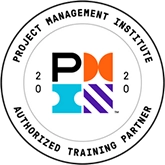Process Modeling for Requirements
- Traditional Classroom: 1-day
- Virtual Instructor-led: Two 3-3.5 hour sessions; Three 2-hour sessions
Conducting business process analysis is a best practice to ensure that the solution requirements are business process-based and that the requirements you document meet the business needs. Identifying/documenting the business processes in scope and documenting the as-is business process flow map for each process enables you to use them for pain point/opportunity analysis. This sets a strong foundation for the business process context where the new solution functionality will come into play to support the business. Pain point/opportunity analysis helps to identify where things need to be fixed, which may or may not result in requirements for a new solution. There is great value in simply understanding where things are not working well. Opportunity analysis focuses on improving a process even when it appears that there is nothing wrong — but it could be done better.
The format of the workshop will be interactive and collaborative. It will serve to provide hands-on workshop discussions/exercises to ensure a sound understanding of how to effectively:
- Identify/document the business process within scope of the project.
- Build an as-is business process flow map to depict who is responsible for doing what, when, in what sequence, using/producing what information, and employing what technology.
- Walk through a business process flow map to identify the different types of pain points and where opportunities that would improve the process.
- Use the process flow map and analysis of pain points/opportunities to identify use cases that are requirements for the new solution.
- Build a use case inventory that jumpstarts a system context diagram.
Target Audience
Individuals who will benefit from this workshop include business analysts and business process analysts.
Learning Objectives
- Describe what a business process is, how to identify them, and how to structure them in a process decomposition diagram.
- Illustrate processes via a process flow diagram.
- Identify and analyze pain points and opportunities for improvement to the business process.
- Identify new solution requirements within the context of the business process by identifying use cases and documenting them in a use case inventory.
- Build a system context diagram that will graphically illustrate the scope of the new system solution (helps to avoid system scope creep).
Key Takeaways
- Identifying business processes
- Building a business process flow map
- Identifying pain points/opportunities and analyzing them to identify new solution requirements (use cases)
- Documenting each use case in a use case inventory
- Building a system context diagram to illustrate the new solution system scope
Course Outline
Understand the Business Scope — Business Context Diagram
- Requirements Life Cycle — Analyze the Business
- Define the Scope — Business vs. System
- Business Context Diagram
- Context Diagram Notation
- Exercise: Build/Revisit the Business Context Diagram
Identify and Structure the Business Processes
- What Is a Business Process
- Types of Business Processes
- Discussion: Starting a New BA Project
- Information Gathering
- Document Business Events
- Exercise: Identify Business Events and Process Responses
- Process Decomposition Diagram
- Exercise: Identify and Structure the Business Processes
Understand the “As-Is” Business Process
- Why Model a Business Process?
- Process Flow Diagrams
- BPMN
- Exercise: Build a Process Flow Diagram
- Business Rules
Conduct Process Analysis — Pain Points/Opportunities/Recommendations
- Deliverables
- Identify Pain Points/Opportunities
- Identify Potential Solutions
- Document Recommendations
- Exercise: Conduct Process Analysis
- Exercise: Conduct Root Cause Analysis
Leverage Process Analysis to Identify Use Cases
- Identifying Use Cases
- Use Case Inventory
- Exercise: Identify Use Cases
Understand the System Scope — System Context Diagram
- Define the Scope — Business vs. System
- System Context Diagram Overview and Notation
- Exercise: Document the Solution Scope — System Context Diagram
- What Is a Business Process
- Types of Business Processes
- Discussion: Starting a New BA Project
- Information Gathering
- Document Business Events
- Exercise: Identify Business Events and Process Responses
- Process Decomposition Diagram
- Exercise: Identify and Structure the Business Processes
Understand the “As-Is” Business Process
- Why Model a Business Process?
- Process Flow Diagrams
- BPMN
- Exercise: Build a Process Flow Diagram
- Business Rules
Conduct Process Analysis — Pain Points/Opportunities/Recommendations
- Deliverables
- Identify Pain Points/Opportunities
- Identify Potential Solutions
- Document Recommendations
- Exercise: Conduct Process Analysis
- Exercise: Conduct Root Cause Analysis
Leverage Process Analysis to Identify Use Cases
- Identifying Use Cases
- Use Case Inventory
- Exercise: Identify Use Cases
Understand the System Scope — System Context Diagram
- Define the Scope — Business vs. System
- System Context Diagram Overview and Notation
- Exercise: Document the Solution Scope — System Context Diagram
- Deliverables
- Identify Pain Points/Opportunities
- Identify Potential Solutions
- Document Recommendations
- Exercise: Conduct Process Analysis
- Exercise: Conduct Root Cause Analysis
Leverage Process Analysis to Identify Use Cases
- Identifying Use Cases
- Use Case Inventory
- Exercise: Identify Use Cases
Understand the System Scope — System Context Diagram
- Define the Scope — Business vs. System
- System Context Diagram Overview and Notation
- Exercise: Document the Solution Scope — System Context Diagram
- Define the Scope — Business vs. System
- System Context Diagram Overview and Notation
- Exercise: Document the Solution Scope — System Context Diagram
BAI304-5B Course Code
For more information on this topic, as well as how Corporate Education Group can help power your organization’s performance, contact us via email or call 1.800.288.7246 (US only) or +1.978.649.8200. You can also use our Information Request Form!





